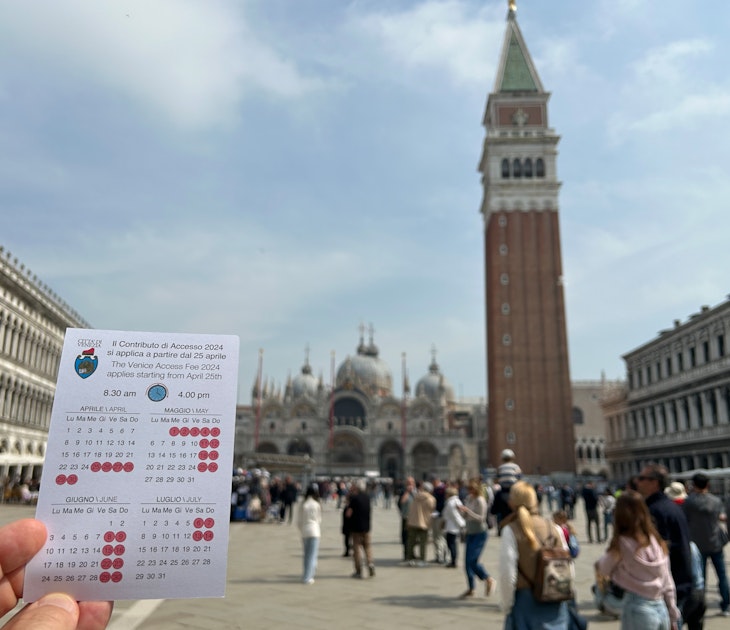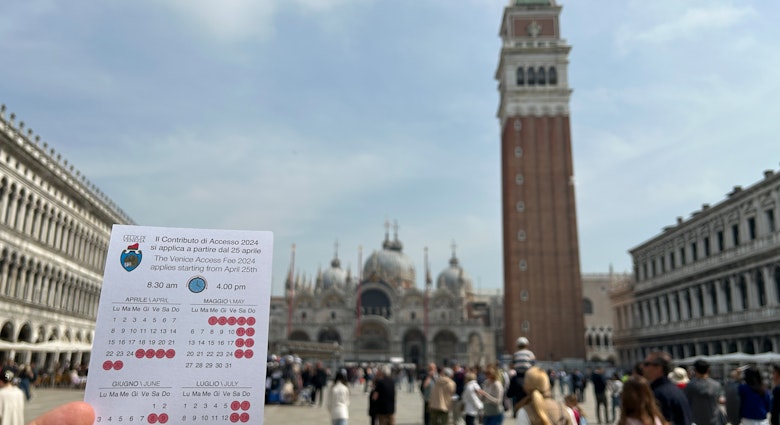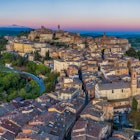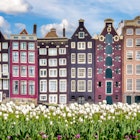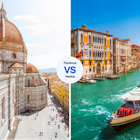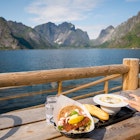In normal times, the idea that you’d get a clear view of the Grand Canal from the Rialto Bridge or that you wouldn’t have to wait in line for hours to visit the Doge’s Palace is a fanciful delusion. But these aren’t normal times and in 2020 we have the rarest of sights: Venice without the crowds.
Visitors to Venice
It’s mid-August and my wife and I are wandering the narrow streets of Dorsoduro. We pass the occasional cluster of German-speaking visitors stopped along the path looking inside a shop window or consulting a map. Any other year and these paths would be a steady throng as dense as a crowd leaving a stadium.
To understand just how big that crowd is, consider the numbers. Last year this small city of 53,000 residents welcomed over 26 million visitors. That’s like if New York City, with its population of 18 million, had to deal with 88 billion visitors a year. That’s crowding on a scale unimaginable by most other tourist destinations.

Since lockdown ended on June 3, people have returned to Venice, mostly Italians and, latterly, visitors from neighboring Austria and Germany as well as a handful from France and other EU countries. But there are no non-European tourists, who ordinarily make up 50% of all visitors. There are also no cruise ships, those hulking wave machines that account for 1.9m of all visitors and are seen by most Venetians as a mechanical pestilence on their precious city.
The COVID-19 pandemic has cut tourism by four-fifths and virtually wiped out the tourist economy, which employs 65% of the population. Even in this city famed for its pragmatic approach to commerce, the coronavirus has tested Venetians’ habitual sangfroid in the face of crisis. And Venice knows a thing or two about crises.
Until a couple of centuries ago, outbreaks of plague were a regular occurrence – indeed, the word "quarantine" was coined here in the 14th century, when ships suspected of carrying the bubonic plague were forbidden from disembarking cargo or personnel for forty days – una quarantena in Italian.

The sights
Our walk takes us from the Punta della Dogana art museum and the Peggy Guggenheim Collection, which are keeping limited hours due to the lack of visitors. We’re there on the wrong day so both museums are closed.
Thankfully, most of Venice’s big-ticket attractions are keeping full summer hours, so we can visit the Scuola Grande Di San Rocco, named after the patron saint of plague victims. The highlight is Tintoretto’s 16th-century Heaven on Earth ceiling panels, painted during a brutal outbreak of plague that claimed half the city’s population in 1576–7.
Any other year and the line to get in would be enormous, and once you were in, you’d be crammed into the Sala dell’Albergo like art-appreciating sardines. Today, we shared the magnificent room with no more than a dozen others.

Local businesses
Empty museums, unobstructed views and the total absence of cruise ships are wonderful for us, but local businesses don’t quite share our enthusiasm. One-third of the city’s hotels haven’t reopened, while those that have are doing their best to fill their rooms by offering low-season rates in the middle of summer.
We stayed in the Hotel Giorgione, an elegant four-star in the Cannaregio district that would normally be full: instead, occupancy is around 70% with most guests booking at the last minute.
“We reopened on May 28 and it was an act of courage,” manager Marisa Milanese tells me with a wry smile. The hotel hopes to take advantage of bookings that might have gone to those places who made the decision to stay closed, but even the most optimistic assessment sees it operating at a loss this summer.
While many of the city’s restaurants are also closed, these tend to be those that cater primarily to tourists keener on the view than the quality of the food. Those that are open are “living day by day,” according to local food blogger Monica Cesarato. “It’s very hard to organize supplies, as restaurants have no idea whether they’ll be empty today or get a lot of day trippers.”
But Cesarato doesn’t think it’s all bad. “Good restaurants that cater to local tastes are actually doing very well, especially those who were active on social media during lockdown, as they stay in people’s minds.”

We tried some local recommendations and were not disappointed. At El Sbarlefo San Pantalon, a nondescript bàcaro (local bar) in the Dorsoduro district, we ate some of the most delicious cicchetti I’ve ever had. This Venetian-style tapas, mostly based on seafood, is ubiquitous in the city, but the really good stuff is a far cry from the mediocre fare you’ll find in many a tourist spot.
We tried to get a table at Hostaria Bacanera, recommended to us by Monica as one of the best spots in town for good, contemporary Venetian cuisine at moderate prices, but the hostess apologetically told us they were full: I scanned the tables and, sure enough, the only voices I heard were Italian with a strong local accent.

We left Venice after a couple of days with none of the exhaustion that results from a visit to one of the world’s most popular tourist hotspots. We also did what is recommended by all Venetians engaged in protecting their city from the perils of overtourism. We stayed in an officially registered hotel, we ate in local restaurants and we made sure to buy our souvenirs from local artisans.
And as much as I want Venice to recover fully from the economic devastation it has suffered, a big part of me feels much like St Augustine did when he yearned to be pure: give me tourists, but not yet.
You might also like:
What travel looks like in Italy in 2020
Italy's six best road trips
Here's how to make a positive impact on your trip to Venice

